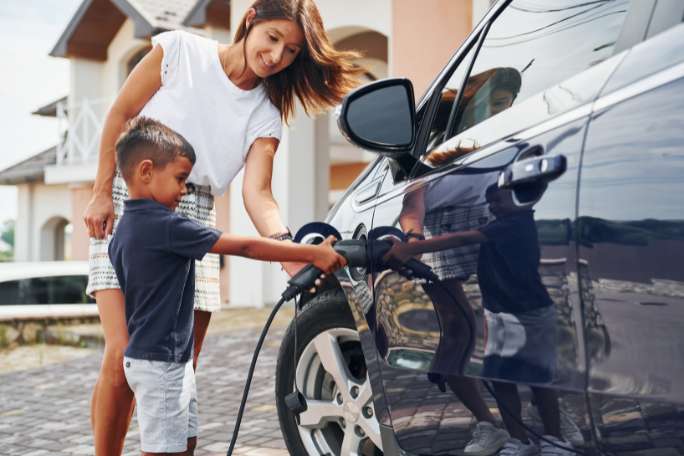Lesson summary
Students understand how electric cars work, and demonstrate how they can reduce carbon emissions from transportation, while also considering some of the challenges associated with this solution.
Learning intentions:
Students will...
- demonstrate ways in which net-zero carbon emissions can be reached by 2050.
Success criteria:
Students can...
- explain, with diagrams and technical language, how electric cars work
- explain, with evidence, how such cars reduce carbon emissions.
Lesson guides and printables
Lesson details
Curriculum mapping
Australian Curriculum content descriptions:
Year 6 Science:
- Electrical energy can be transferred and transformed in electrical circuits and can be generated from a range of sources (ACSSU097)
Relevant parts of the Year 6 Science achievement standards: Students analyse requirements for the transfer of electricity and describe how energy can be transformed from one form to another when generating electricity
Year 7 Science:
- Some of Earth’s resources are renewable, but others are non-renewable (ACSSU116)
Relevant parts of the Year 7 Science achievement standards: Students analyse how the sustainable use of resources depends on the way they are formed and cycle through Earth systems
Syllabus Outcomes: ST3-6PW, SC4-12ES.
General capabilities: Literacy, Critical and Creative Thinking
Cross-curriculum priority: Sustainability
This lesson is part of the wider unit of work IPCC Climate Change Solutions
Teaching Time required: 60 minutes.
Level of teacher scaffolding: Medium – Discuss the IPCC report with students, directly instruct students on how electric vehicles work, and support them in independent work
Resources required
- A device capable of presenting a video to the class (optional)
- Art materials – coloured pencils and textas
- Individual devices capable of accessing the internet – one per student (optional)
- Presentation Slides (optional)
- Student Worksheets – one copy per student (optional)
- Whiteboard
Skills
This lesson is designed to build students’ competencies in the following skills:
- Communication
- Critical thinking
Additional info
Cool would like to thank the Lord Mayor’s Charitable Foundation and The Vincent Fairfax Family Foundation for generously supporting the development of these lessons.


Welcome back!
Don't have an account yet?
Log in with:
By signing up to Cool.org you consent and agree to Cool's privacy policy to
store, manage and process your personal information. To read more, please see
our privacy policy here(Opens in new tab).
Create your free Cool.org account.
Many of our resources are free, with an option to upgrade to Cool+ for premium content.
Already have an account?
Sign up with:
By signing up to Cool.org you consent and agree to Cool's privacy policy to
store, manage and process your personal information. To read more, please see
our privacy policy here(Opens in new tab).